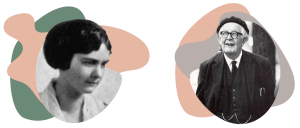4 Play and learning theoretical perspectives
Early research recognising the relationship between play and learning
There is a long history of theories evidencing the strong interconnection between play and learning, particularly in the acquisition of social, emotional, and cognitive skills. Connections between play and learning date back to the early theories of Parten’s social behaviour theory, Piaget’s cognitive developmental theory, and psychoanalytic theories.

Parten’s stages of play
In the 1930s, Mildred Parten identified six stages of play (Parten 1932; Parten 1933; Parten & Newhall 1943). These have been used over many years to support thinking about children’s engagement in play. Initially seen as outlining a linear progression, they are now considered as non-hierarchical, with children moving between stages depending on many factors.
Read, look, or listen
Explore the interactive image below that describes Parten’s stages of play. Click on the plus (+) below to read the definitions.
Open text versionClose text version

Opportunities of play-based learning experiences – interactive image hotspots.
This interactive shows a series of six illustrated graphics in a row
The interactivity
The scene has clickable hotspots on images that visualise Parten’s six stages of play. The six images are labelled:
- Unoccupied play
- Solitary play
- Onlooker play
- Parallel play
- Associative play
- Cooperative play
Each hotspot outlines a description of each stage of play and relevant references where appropriate.
Hotspot one: Unoccupied play
Unoccupied play is when the child is not visibly engaged in play. Often seen in babies, this stage has no social interaction. Observations and movements occurring at this very early stage are building the child’s initial perceptions, understandings, and movement control that are required for later play stages.
Hotspot two: Solitary play
Solitary play is when the child plays alone, focusing on the materials they are using. At this stage, children are so involved in their own play that they are not aware of or interacting with their peers, even when the play occurs in shared spaces.
Hotspot three: Onlooker play
Onlooker play is when the child plays alone but watches the play of others nearby. The child does not join the play of others but is aware of what is occurring.
Hotspot four: Parallel play
Parallel play is when the child plays alongside or next to other players engaged in similar activities and experiences. However, there are very few interactions between the children and minimal social exchange takes place.
Hotspot five: Associative play
Associative play is when the child’s focus shifts from the activity or materials they are using to become more interested in other children and their play. There are attempts to engage in the play of others but this is not consistent nor ongoing.
Hotspot six: Cooperative play
Cooperative play is when the child plays with others, cooperating and collaborating. Group goals are developed, different roles are adopted, and collaborative rules are followed. However, a great deal of problem-solving also takes place at this stage as children experience the challenges of cooperative play.
Piaget’s theory of cognitive development
Jean Piaget developed his learning theories over the 1920s and 1930s but continued his research throughout the mid-twentieth century (Boden, 1980). Piaget saw learning as a process that evolves through the interaction of the child with their environment (MacBlain, 2014). The child is seen as moving through certain stages of cognitive development as they assimilate and accommodate new knowledge.
Piaget believed that knowledge is built through conflicts with existing understandings, culminating in new and more sophisticated understandings. The idea that the child passes through developmental stages has implications for how children play (Garhart, 2013). The highest stage in Piaget’s theory, which is reached during the school years, is seen as supporting children to engage in games with rules.

